Welcome to the latest issue of Feed the Monster, a monthly art journal for the creative and imperfect. Come as you are.
Please click on the ❤️ above if you want to help this publication grow! Or please consider supporting me with a subscription.
After I fractured my ankle, as I’ve complained far and wide, I was stuck living on my bed for five weeks and was unable to work in the studio. Getting back into the swing of things took a while, which is normal I suppose, but I didn’t appreciate it. Before Christmas I was laser focused on my Life’s Work project about my mother and her Lewy Body dementia, full of ideas and next-steps. Now I found myself back in my studio staring out the window, and wondering what the hell I was supposed to be doing. I was not, as they say, amused.
I decided to re-acquaint myself with the project by reading over everything I’d written to that point, and by looking at all of the related artwork—paintings and graphic memoir work. That seemed to do the trick, and I found a way back in—though it wasn’t with what I’d been planning before the ankle debacle. Those plans are going to have to wait until I’m in the thick of it again… they’re not for the faint of heart, or those just finding their footing again. They’re going to require an emotional deep-dive, and I’m not there yet.
I decided to wade back in by trying another graphic memoir piece about my Mom’s dementia, only this time allowing one of the stories more room to unfold, rather than trying to squeeze it into a single panel. The result (in progress) is above.
Once again I find myself frustrated with the drawing aspect—I don’t take pleasure in figuring out how to render cars or people in particular, specific positions. Yet here I am. The things I’m drawing don’t need to be rendered perfectly (and there’s no danger of that), but I do want the viewer to be able to tell what’s happening. I struggle to find a balance between realism and gesture, and I vacillate between feeling virtuous about developing a new skill and being frustrated with it. I’m working out a drawing style as I go it seems, trying to find one that pleases me.
MUST…
KEEP…
TRYING
…it’s all I can do.
STROKE OF INSIGHT
Jill Bolte Taylor was a noted neuroanatomist doing research at Harvard University when she suffered a hemorrhagic stroke, causing blood to pour into the left hemisphere of her brain. She observed over the course of 4 hours as each of her left-brain functions shut down, until only her right-hemisphere was running the show. As a neuroanatomist, she learned a lot. It took her eight years to fully recover, but recover she did.
Some years ago I happened upon her Ted Talk “My Stroke of Insight”. I’ve recently learned that it’s the 7th most popular Ted Talk, with something like 7 million views, so you’ll forgive me if I’m showing you something you’ve seen.
This Ted Talk had an impact on me, and I hadn’t seen it for years when I happened upon Taylor’s book My Stroke of Insight in a “little free library” I pass when I walk the dog. I recognized the name and I grabbed the book—a delight, as I rarely find books I want in those things. The book of course expounds on what she says in her Ted Talk, and it didn’t disappoint, until the final chapters when she hammered home some points a little too hard.
The left-hemisphere of the brain is responsible for language, organization, judgement, past and future, ego… your sense of being a separate entity in a world of separate entities, with an identity and a life story. It’s linear and methodical, concerned with details. It makes architecture possible, for example.
The right-hemisphere however is all about the here and now, oneness with everything, the big picture, connection, compassion, joy, and creativity. If someone is speaking to you, your left brain is responsible for understanding the words, but your right brain is picking up on the non-verbal cues and sensing any emotion behind what’s being said. The right brain thinks in pictures, and learns kinesthetically through movement of the body. It’s responsible for intuition, and it senses the energy of others.
Jill Bolte Taylor says her main message is that we can choose who and how we want to be in the world, as she chose to remain in tune with her right-hemisphere as her left-brain slowly “came back online”.
Although I wanted to regain my left hemisphere skills, I must say that there were personality traits that tried to rise from the ashes of my left mind that, quite frankly, were no longer acceptable to my right-hemisphere sense of who I now wanted to be.
In Western culture we’re raised to favour the left-hemisphere… left-brain traits are valued and promoted over right-hemisphere traits, generally speaking. Many people aren’t aware that there are two separate hemispheres in their brain, let alone that they’re missing out on getting to know one of them better. We can’t all have life-threatening strokes that clearly delineate the differing personalities of our brain hemispheres.
Jill Bolte Taylor describes how, at a certain point in the 4-hour period while blood was making its way through her left-hemisphere, her brain “went silent”. We aren’t always conscious of it, but our left brain provides us with a running commentary of observations, reminders, condemnations of ourselves or others, what we’re going to say next time we see so-and-so, and on and on. Ad infinitum. Never shuts up. For me this brought to mind the brain chatter that I’ve become all too aware of when I attempt meditation, and gave me a different sense of what’s happening when I try to, for example, focus solely on my breath. It means I’m trying to be in the “here and now”… I’m trying to be in my right brain.
While Bolte Taylor was still operating with the right-brain only, she wasn’t able to distinguish where her body ended and the rest of the world began… she was only able to see patterns of energy.
FAS - CI - NA - TING.
CUSTOMER DOODLES!
When my daughter was growing up, I worked for many years at a local art supply store. Back in the day there were a medley of small pads of paper left on the counters for people to try out the pens on, and I got into the habit of spiriting away the doodles I found worthy or thought were funny. The book pictured below is filled with found art from 1997 – 2005.
Thanks very much to the readers who answered the Feed the Monster questionnaire sent by email on Friday, February 12th. If you haven’t filled it out—please do! It doesn’t take long, and it helps me a lot. If you didn’t see it, it may have gone into your junk folder.
The questions with the most interesting answers were “what’s your favourite aspect of Feed the Monster?” and “how would you describe Feed the Monster?” I’m not sure I can summarize the responses I received as they were so varied, but I appreciated every last one. When it comes to feedback, up until now I’ve subsisted on air, faint curls of smoke just fading from view, and a few email responses each month (which keep me alive). The responses to the questionnaire were the shot in the arm I needed after those crazy, hazy, ankle fracture days. THANKS.
Bye for now,
B.A.
🪞Thank you very much for being here.
🪞If you find value in my posts, please consider supporting me and my work by becoming a paid or free subscriber:
🪞Or please click on the little heart, leave a comment, or share this post.
🪞Buy TAKING NOTE: Creating Ourselves Through Journaling—$42 CAD. More info here.
🪞Buy my Collage Class—$40 CAD for a 1-hour download. More info here.
🪞Listen to my interview with Sheryl MacKay on CBC’s NxNW here (starts ten minutes in). It’s all about Life’s Work: A Visual Memoir, an art exhibit about my mother’s Lewy Body dementia and my relationship with her
🪞Visit balampman.com
🪞There's always Instagram

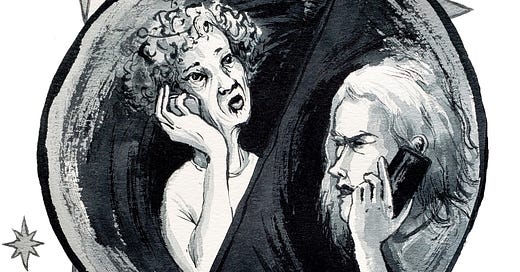





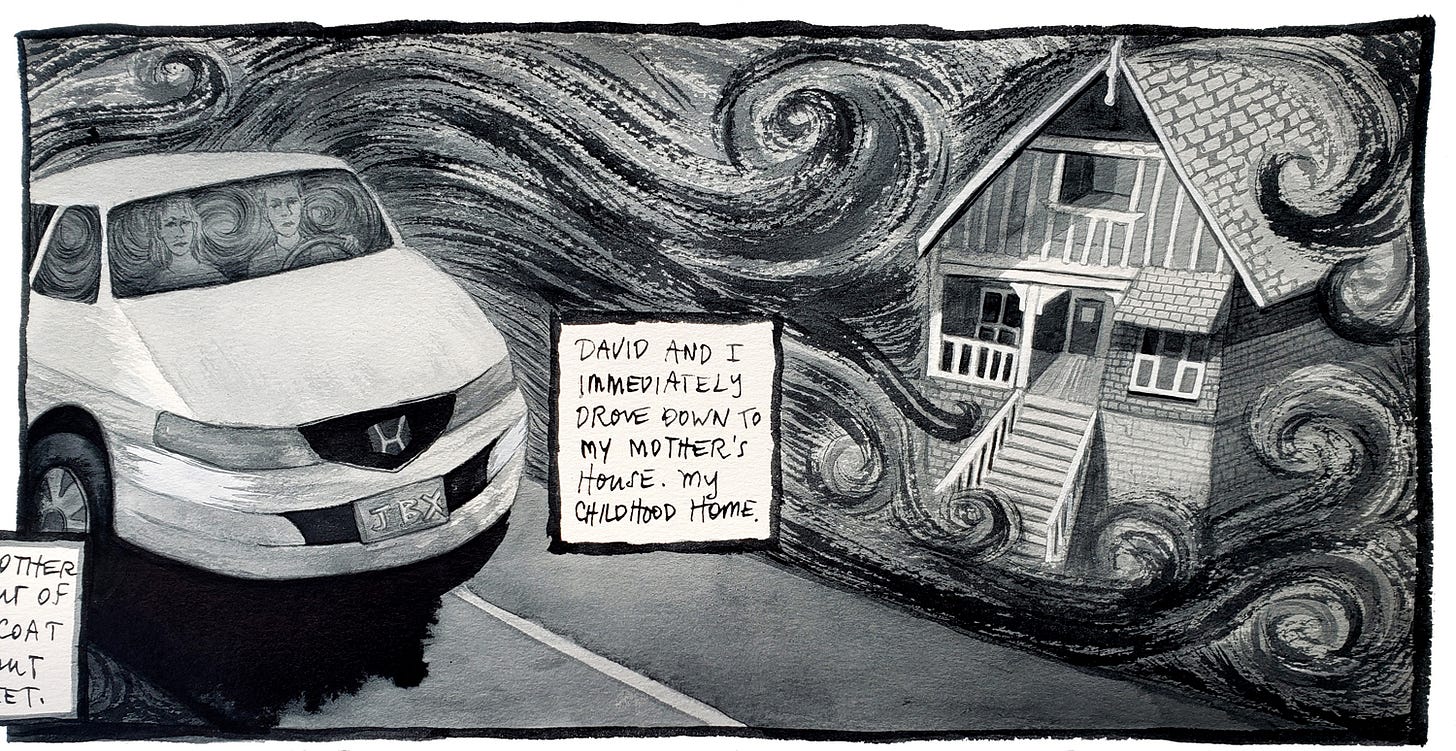

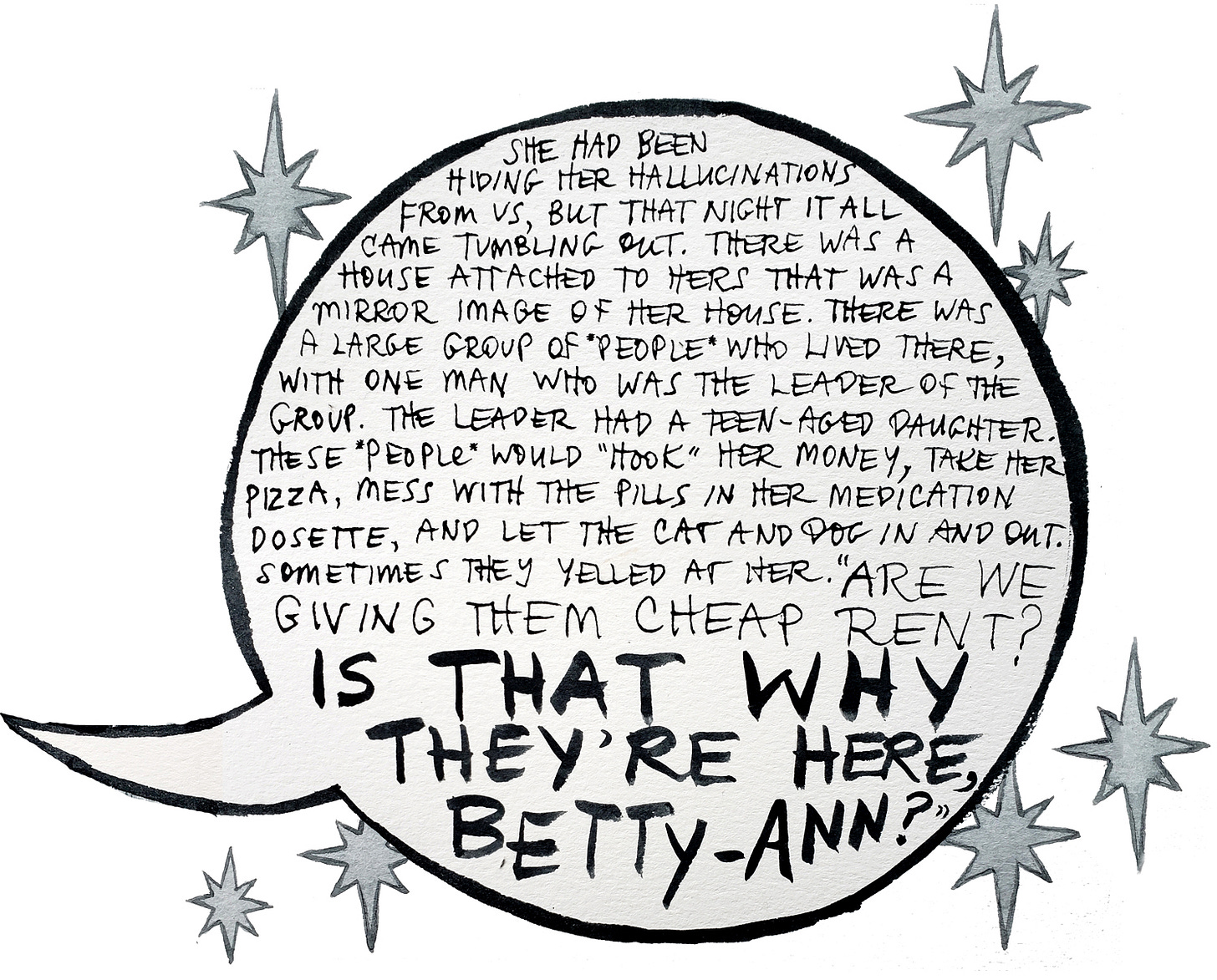

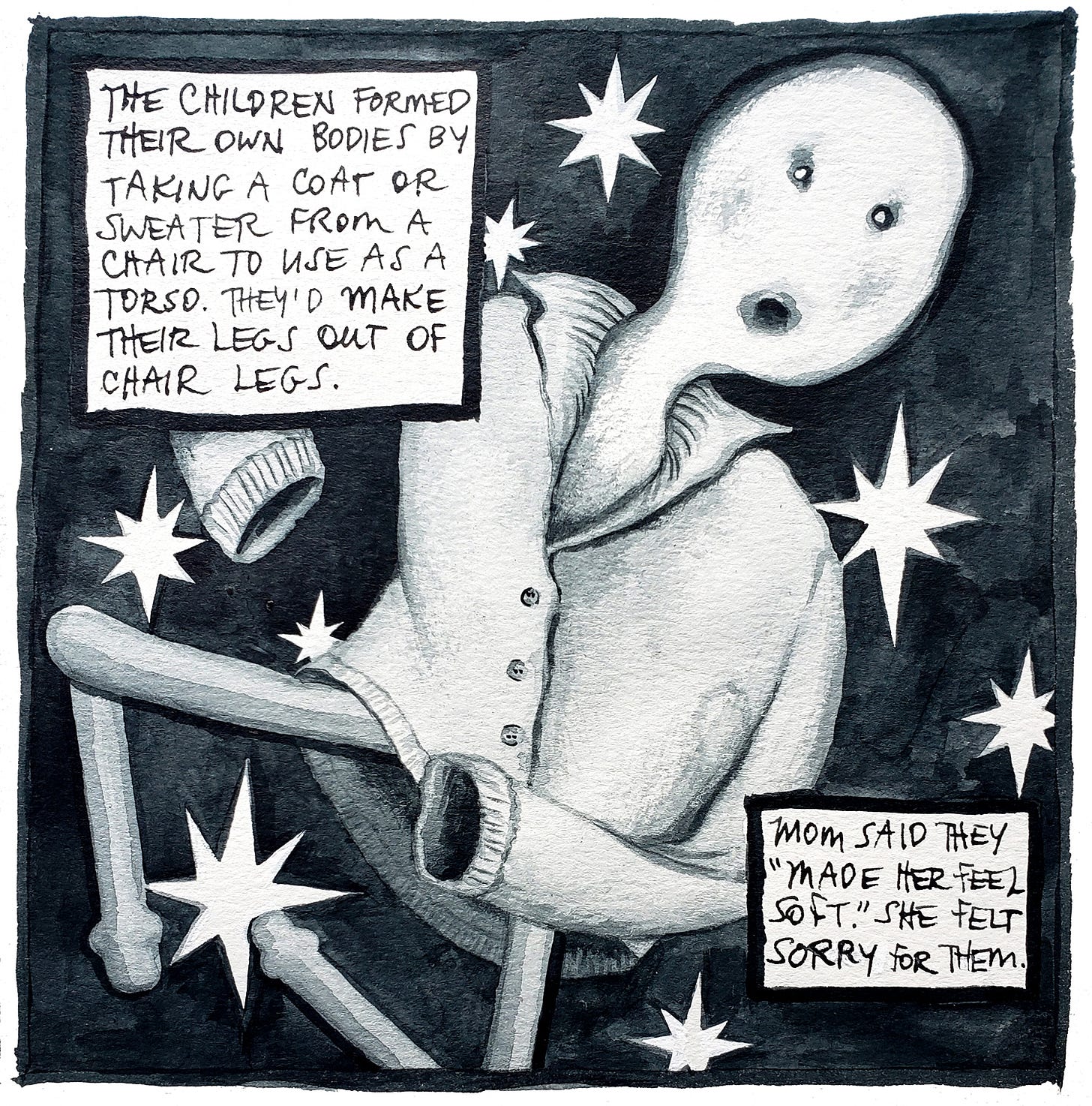






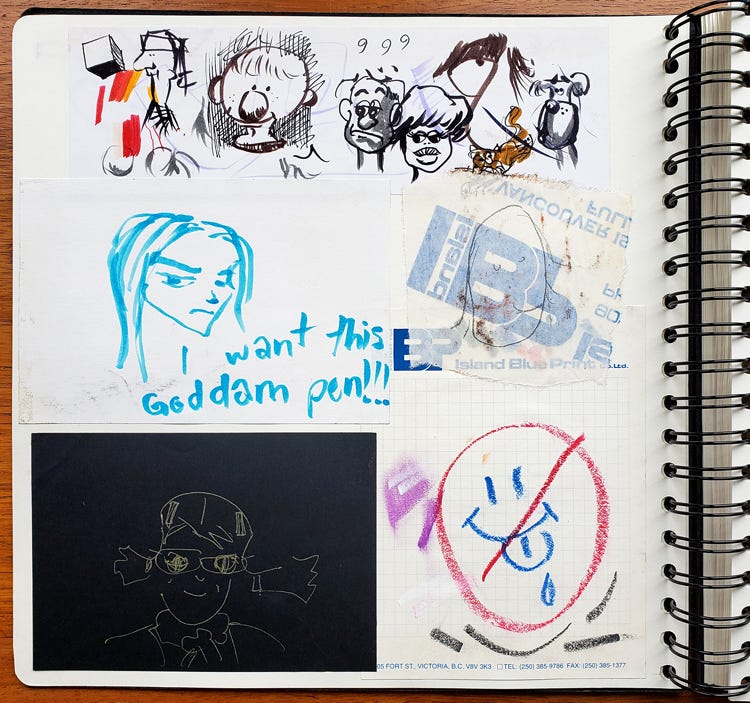
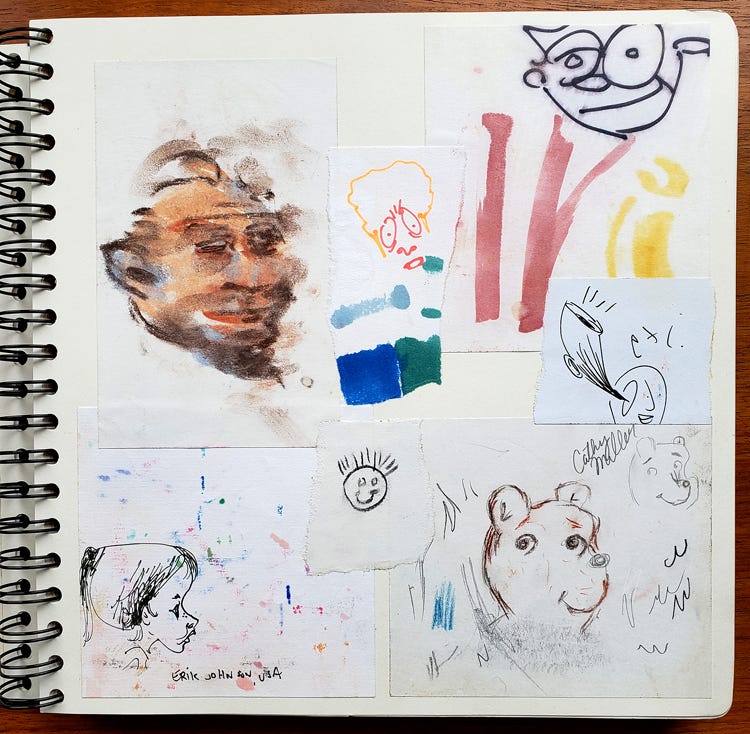
Your are one of my all time favourite artists... I wish I had the talent you do and, yes, vulnerability IS punk as fuck because punk, at it's heart, was about putting yourself out there and damn the consequences. It can be scary, but it also cathartic... and catharsis releases stress... and stress is created by The Man... and undermining The Man is punk as fuck.
I so enjoyed reading this. My mom has Lewy Body dementia as well, after suffering for many years with Parkinson's. I just got back from spending 8 days caring for her in the hospital, and can relate to much of what you shared. I also do collage and painting and love seeing yours. Thanks so much for sharing what you do.
Jenelle